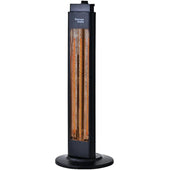Understanding the Emotional Impact of Dining Spaces
Dining spaces influence emotional well-being, shaping family interactions and daily experiences. The arrangement of furniture, lighting, and décor directly impacts mood and communication. Warm, inviting spaces foster connection and may encourage open dialogue, while cluttered or poorly lit areas can hinder emotional bonding.
- Colours and textures: Calm tones and natural materials evoke relaxation, enhancing comfort while dining.
- Space functionality: Ample seating supports inclusivity, ensuring everyone feels valued.
- Design flow: Harmonious layouts reduce stress by promoting ease of movement.
Ultimately, dining sets transform meals into moments of intimacy by blending aesthetics with psychological cues that enhance communal joy.
The Symbolism of Dining Sets: Beyond Functionality
Dining sets represent more than mere furniture; they embody cultural, emotional, and social significance. Historically, they have denoted social status, with ornate designs symbolising wealth and sophistication. Their arrangement promotes a sense of unity, encouraging interaction and shared experiences during meals. Materials used, such as wood or glass, convey themes of tradition, modernity, or sustainability.
As featured on During Days, the shapes of tables, whether round or rectangular, evoke different atmospheres—rounded edges encourage intimacy, while linear shapes suggest formality. Colours and designs can influence mood, with warm tones fostering comfort and bright hues stimulating conversation. Thus, dining sets bridge practicality and profound emotional resonance.
Colours and Materials: Influencing Mood and Appetite
Colours and materials play a significant role in shaping the atmosphere of a dining space and can subtly influence appetite and mood. Warmer colours like red and orange are often associated with increased appetite and energy, while cooler tones like blue and green tend to create a calming ambiance.
The choice of materials also affects perceptions; natural wood surfaces evoke warmth and comfort, whereas glass or metal finishes suggest modernity and sophistication. Soft fabrics for chairs promote relaxation, while harder materials may emphasise formality. The interplay between colour and texture ensures an aesthetic that resonates emotionally while impacting dining experiences positively.
The Role of Design in Family Connection and Communication
The design of a dining set plays a pivotal role in fostering family connection and communication. Well-designed furniture encourages face-to-face interaction by ensuring proximity and comfort. Round or oval tables enhance inclusivity, removing hierarchical seating arrangements, and promoting equal participation in conversations. Sized appropriately for the household, the set provides physical space that reflects emotional openness.
Materials and colours also influence moods; warm wood tones and soft textures create a cosy environment conducive to candid discussions. Ergonomically designed chairs ensure long-lasting comfort, making meals and chats less rushed. Ultimately, design harmonises aesthetics with functionality to establish an inviting and communicative family space.
Choosing a Dining Set to Reflect Your Family’s Personality
Selecting the right dining set involves blending functionality with emotional resonance. Each family has unique traditions and tastes, making personalisation essential. For vibrant and sociable families, bold colours and eclectic designs can energise the dining space. Minimalist or modern sets appeal to those who value simplicity and order. Rustic wooden finishes pair well with families who cherish nostalgia and warmth. Durability should be prioritised for households with children, ensuring balance between style and practicality. Round tables encourage inclusivity, while rectangular designs suit structured settings. Upholstered chairs add comfort, whereas sleek designs promote contemporary aesthetics. Matching the set to your family’s essence creates a meaningful dining experience.
Psychological Associations of Space and Layout in Dining Areas
The arrangement of dining spaces influences emotional and social dynamics during meals. Open layouts encourage interpersonal interaction by reducing physical and psychological barriers, fostering a sense of togetherness. Conversely, cramped or cluttered setups may induce feelings of stress or discomfort, potentially diminishing the dining experience. Circular or oval tables are perceived to promote equality and unity due to their lack of hierarchy, while rectangular tables tend to establish defined seating order, impacting the flow of conversation. The presence of natural light and aesthetically pleasing decor can elevate mood, enhancing food enjoyment and overall satisfaction. These elements subtly shape the psychology of dining.
How Dining Sets Shape Meal-Time Rituals
Dining sets play a pivotal role in structuring meal-time experiences, influencing how families interact and bond during meals. The arrangement and design encourage specific behaviours, such as gathering together and maintaining eye contact, fostering communication. The size and style of a table often reflect cultural values, such as inclusivity or formality, shaping rituals over time. Additionally, the material and layout impact sensory aspects, creating a conducive environment for enjoyment and collaboration during meals. Chairs positioned symmetrically or tables designed to fit all family members ensure equity, promoting shared moments and reinforcing familial ties through shared traditions and habits.
Creating a Comfortable Dining Environment for All Ages
A harmonious dining space caters to the varying needs of family members across all age groups. Chair heights and seat cushions play a pivotal role in ensuring children, adults, and elderly individuals feel supported. Rounded edges on tables and chairs enhance safety, particularly for younger children. Incorporating adaptable furniture, such as extendable tables, allows families to adjust based on group sizes. Colours and materials impact ambiance; soft, neutral tones foster calmness, while durable fabrics resist spills. Lighting choices should balance brightness for visibility with warmth for comfort during meals. Thoughtful arrangement encourages inclusivity, creating equilibrium between style and functionality.
The Link Between Dining Settings and Nourishing Relationships
The design and arrangement of dining settings play a fundamental role in shaping interpersonal connections. The layout of a dining set can influence eye contact, seating proximity, and conversation flow, fostering emotional connections among family members. Round tables, for example, encourage equality and collaboration, while rectangular tables are often preferred for structured family meals.
Lighting is another significant factor; warm, ambient lighting creates an inviting atmosphere conducive to meaningful conversations. Chairs with comfortable designs promote lingering at the table, allowing discussions to unfold naturally. Table décor, such as a shared centrepiece, evokes a sense of unity and belonging.
Ultimately, dining settings create an environment where people feel valued and connected, shaping a backdrop for healthier family dynamics.
Transforming Family Meals Through Thoughtful Dining Set Choices
The choice of dining set plays a pivotal role in shaping the atmosphere of family meals. A well-thought-out design can create an inviting space that encourages connection and mutual engagement. For instance, round tables promote inclusivity by allowing easier eye contact, while rectangular ones may be more suited for larger gatherings. The colour of the dining set can influence mood, with warmer tones fostering a sense of comfort and cooler tones offering a calming effect. Materials also matter; natural wood may invoke warmth and authenticity, whereas glass can add elegance and openness. Carefully selecting the dining set ensures a harmonious meal experience.



















































